Golf is a game of precision, skill, and strategy. For golfers aiming to improve their game, equipment is essential, with each piece serving a purpose, from the clubs to the rangefinder. The golf laser rangefinder has become one of the most helpful tools for golfers of all levels. With advances in technology, rangefinders now come with features like “slope,” which add a new level of accuracy to the game. A golf laser rangefinder with slope takes into account the incline or decline of the terrain, giving you more precise yardage measurements. This article will explore why using a golf laser rangefinder with slope can improve your game, how to choose the right one, and what to consider when selecting the best device.

What is the Slope in a Golf Laser Rangefinder?
When it comes to rangefinders, “slope” refers to the feature that allows the device to adjust distance readings based on changes in elevation between the player and the target. For example, a shot on a flat course will require different calculations than a shot uphill or downhill. With slope technology, the rangefinder factors in the angle of the incline or decline to offer an adjusted “plays-like” distance. This feature accounts for the gravitational impact on the golf ball’s trajectory, allowing golfers to make better-informed decisions about shot power and club selection.
Golf laser rangefinders with slope capability use advanced algorithms to calculate slope-adjusted distances, taking the stress out of doing the math on the fly. Whether on a challenging uphill green or a downhill fairway, a slope-enabled rangefinder will quickly give the distance you should actually play, helping golfers make smarter strategic decisions.
Why is Slope Important?
Golf courses are designed with various challenges, such as bunkers, water hazards, and complex terrain that demands a strategic approach. Slope plays a significant role in navigating these obstacles successfully. For instance, on a course with several elevation changes, the difference in slope can cause you to under-hit or over-hit the ball, often resulting in poor shots or missed opportunities. For example, hitting a 150-yard shot uphill may feel like hitting a shot closer to 160 yards on flat ground. The higher elevation means the shot will take more power than initially thought, which can cause miscalculations.
With slope functionality, you can eliminate the guesswork, especially when encountering unfamiliar terrain. This can lead to better shots, improved scores, and a deeper understanding of the course layout. Slope adjustments are also helpful for advanced players who want to refine their skills, as the precise yardage with elevation adjustments provides a new level of accuracy.

The Benefits of Using a Golf Laser Rangefinder with Slope
Using a golf laser rangefinder with slope offers several practical advantages for golfers. Here are some of the top benefits:
- Enhanced Shot Accuracy:A rangefinder with slope technology provides the actual distance needed, helping players select the right club and amount of power for each shot. This capability is especially useful on uneven terrains where elevation significantly impacts the ball’s path and distance.
- Informed Club Selection:With slope readings, golfers know exactly how much power is required for each shot based on elevation changes. This eliminates the guesswork in club selection, ensuring that the golfer always has the best possible chance to get closer to the target.
- Better Course Management: Slope-enabled rangefinders help players make strategic decisions based on precise yardage data. By accounting for elevation, golfers are better prepared to avoid hazards and place shots more effectively, setting up opportunities for better positioning and fewer mistakes.
- Confidence Boost on the Course: Knowing the exact “plays-like” distance to the target gives golfers the confidence to take on challenging shots. This confidence can improve a player’s focus and execution, ultimately resulting in a stronger overall performance.
- Data-Driven Practice: Golfers who use a rangefinder with slope during practice can better understand how elevation affects their shots. With slope-adjusted data, players can identify patterns in their game and make informed adjustments that benefit them during competitive play.
When to Use a Golf Laser Rangefinder with Slope?
- On Courses with Significant Elevation Changes:Not all golf courses are created equal; some have undulating fairways, steep uphill greens, and tricky downhill approaches. When you’re on a course with significant elevation changes, a slope-enabled rangefinder is particularly beneficial.
- In Practice Rounds or Friendly Games:Most golf tournaments restrict the use of rangefinders with slope technology during competitive play, as it could provide an unfair advantage. However, during practice rounds or casual games, using a slope-enabled rangefinder can offer valuable insights and help players fine-tune their shot calculations.
- When Approaching the Green:Approach shots are where accuracy matters most, and a slope rangefinder can make a world of difference. With the slope feature, players gain an advantage in assessing the distance more precisely, especially when approaching a green positioned on an incline or decline.
- For Learning Purposes:Golfers can use a rangefinder with slope as a teaching tool to understand how elevation affects shots. By practicing with a slope-enabled rangefinder, players can learn the adjustments required for various slopes, building a skill set they can rely on, even when playing without the device.

How to Choose the Right Golf Laser Rangefinder with Slope?
When selecting a golf laser rangefinder with slope, there are several factors to consider:
- Accuracy and Range: The primary purpose of any rangefinder is to provide accurate distance readings. When selecting a golf laser rangefinder with slope, check its accuracy rating, usually specified in yards. Most quality rangefinders have an accuracy range of +/- 1 yard, but some models offer even finer precision. Consider a model with a longer range if you frequently play on expansive courses.
- Slope Toggle Feature: As mentioned, tournament play typically restricts the use of slope features. Many modern rangefinders have a slope toggle switch, allowing users to disable the slope function. This feature is essential for competitive golfers who need a device that complies with tournament rules while still benefiting from slope readings during practice.
- Optical Quality: Look for a rangefinder with a clear and high-quality lens, as optical clarity can significantly impact usability. A device with multi-coated lenses offers better light transmission and a clearer view of the target. Additionally, magnification (often between 5x to 7x) is a crucial aspect, helping golfers accurately spot their target from a distance.
- Ease of Use: A user-friendly rangefinder enhances the experience, especially when you need quick readings during a round. Look for models with intuitive, single-button operation or a straightforward display. Some models even come with vibration feedback, indicating when the device has locked onto the target.
- Durability and Weather Resistance: Golf is an outdoor sport, often played in varying weather conditions. A good golf laser rangefinder with slope should be durable and ideally weather-resistant. Many high-quality rangefinders come with waterproof or water-resistant coatings, making them reliable even in wet or humid conditions.
- Battery Life:Rangefinders rely on batteries, and it’s essential to choose a device with long-lasting battery life. Some models use replaceable batteries, while others have rechargeable options. Evaluate which option works best for you, considering factors like how often you play and the convenience of recharging or replacing batteries.
- Additional Features:Advanced rangefinders may come with extra features such as target locking, flag-seeking technology, or slope calculation based on environmental factors. While these features can add to the price, they may be worthwhile for players who want every possible advantage.

Best Golf Rangefinder with Slope: GoGoGo Pro GS24
The GoGoGo Pro GS24 has quickly gained popularity among golfers due to its accuracy, versatility, and affordability. Let’s take a closer look at what makes this rangefinder stand out.
Key Features of the GoGoGo Pro GS24
- Slope Adjustment Functionality: The GS24 includes a slope adjustment mode, which you can toggle off when necessary, making it compliant with tournament regulations.
- High-Accuracy Measurement:The GS24 offers reliable yardage within a 1-yard accuracy and has a maximum range of up to 1200 yards.
- Clear Optics with 6x Magnification:The rangefinder has multi-layered optics that provide a clear view of your target with 6x magnification, making it easier to lock onto flags and other points.
- Flag-Lock Technology with Vibration: The GS24 vibrates when it locks onto a flag, eliminating the need to guess whether you've targeted the right point.
- Affordable Pricing:Compared to other models with similar features, the GoGoGo Pro GS24 is competitively priced, offering excellent value without compromising on key features.
- Compact and Lightweight Design:Weighing only a few ounces, this rangefinder is easy to carry and handle, ideal for quick, on-the-go adjustments during play.
Advantages of the GoGoGo Pro GS24
- Accurate slope adjustment and yardage calculation
- Legal for tournament play (when slope mode is disabled)
- Vibration feedback on flag-lock for enhanced accuracy
- Affordable, offering great value for budget-conscious golfers
- Lightweight and compact, with excellent magnification
The GoGoGo Pro GS24 is ideal for both beginners and experienced golfers, combining essential features with affordability. Its slope functionality, flag-lock technology, and ease of use make it a strong contender among golf rangefinders with slope adjustment.

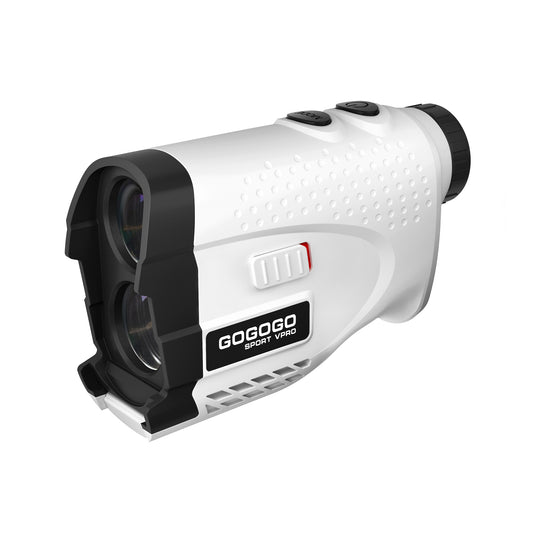
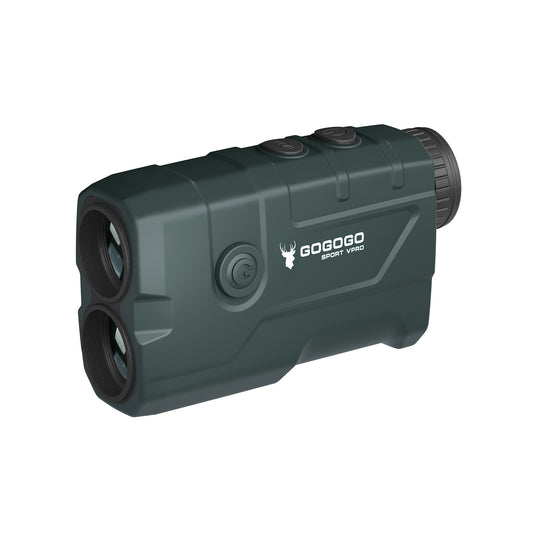
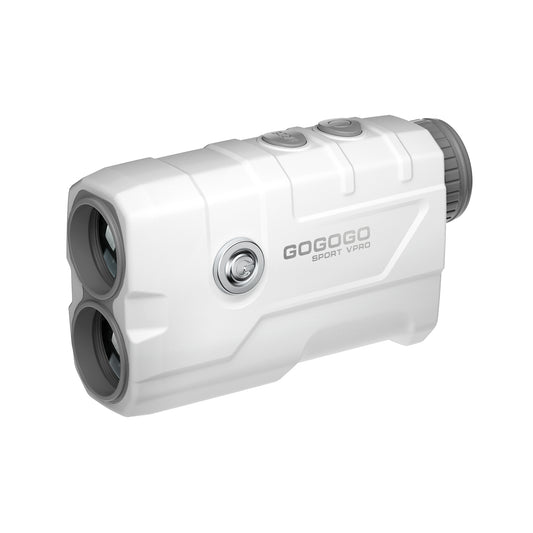
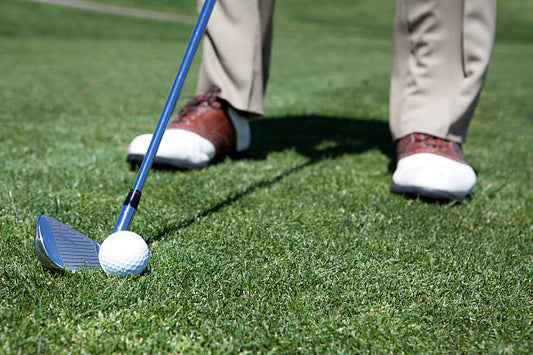
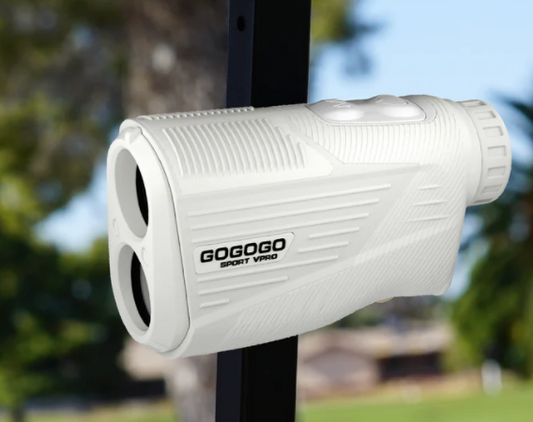

![[2025] The Ultimate Guide to Pinseeker Rangefinders for Golfers](http://gogogosport.com/cdn/shop/articles/gogogo_sport_vpro_pinseeker_rangefinder.png?v=1757993796&width=533)